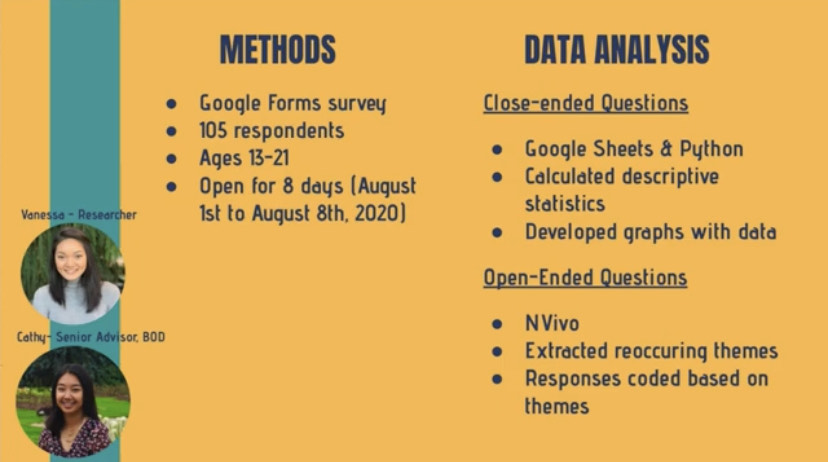In March 2020, the fate of many youth enrichment programs was up in the air due to the pandemic.
But this didn’t stop a group of students, who had connected prior to Shad, from coming together and uniting in their love of STEAM.
“One of the things that a lot of us were looking the most forward to was the design project, where we could get the opportunity to create something that we could actually apply to and improve the real world in some way,” says Shad2020 Linda Duong, co-founder and social co-lead at Race to a Cure.
They saw an opportunity to support youth, who like them, felt lost in the news and uninspired by the limited COVID resources available for high school students.
“This situation that we’re living in, especially as youth, it feels as if this world that we are about to inherit is just crumbling at our feet,” says Jacob Farrell, human resources co-lead at Race to a Cure. “It’s really important to us that we get youth inspired and we provide them quality information that they can actually understand and appeals to them.”
So, they created Race to a Cure: a platform that empowers youth through interactive activities, positive news, and reliable information about the pandemic.
They comb through news articles to provide updates about COVID that are easily digestible and geared towards young people. They also publish website articles—about science and social issues—written by youth for youth.
“These are things that youth care about. In today’s climate, youth care about social issues, they care about COVID, they care about the environment, they care about this whole world that we are living in,” says Jacob.
Race to a Cure has since expanded, becoming a registered non-profit whose mission goes beyond COVID. Now it’s a national platform that creates opportunities for youth with a passion for STEAM through research, civic improvement, and social welfare.
The #RisingYouth grant supported one of their first large projects: a webinar (in collaboration with AlumNav) with six university students who shared their tips and knowledge about applications and post-secondary studies.
Race to a Cure also developed a research study called “The Socioeconomic Effects of SARS-CoV-2 on Canadian Youth.” They collected data from students all across Canada and were featured in the 7th annual Global Health Students and Young Professionals Summit.

“We were hoping to use this data to bring it forward to Canadian school boards,” says Linda.

Now Race to a Cure has 50 executive members, and 50 non-executive members who are part of the group’s ambassador program.
“Our members are from all across Canada, which is amazing, because you get so many different perspectives but yet we’re also so likeminded. It’s a great environment to work in,” says Jacob, who is from a rural town in Newfoundland.
“Being able to get that local perspective from members in a bunch of different cities is super interesting for our articles,” says Linda, who is from Ottawa. “They are able to cover so much, from the range of high school advice in my province to this is what COVID is like in my province.”
They are continuing to pursue different projects, including a podcast, and are hoping to expand their reach to more youth.
Continue reading the stories of Shad alumni who’ve received #RisingYouth grants.